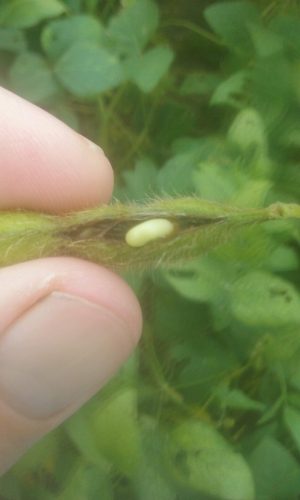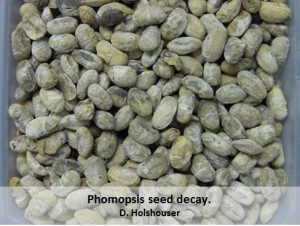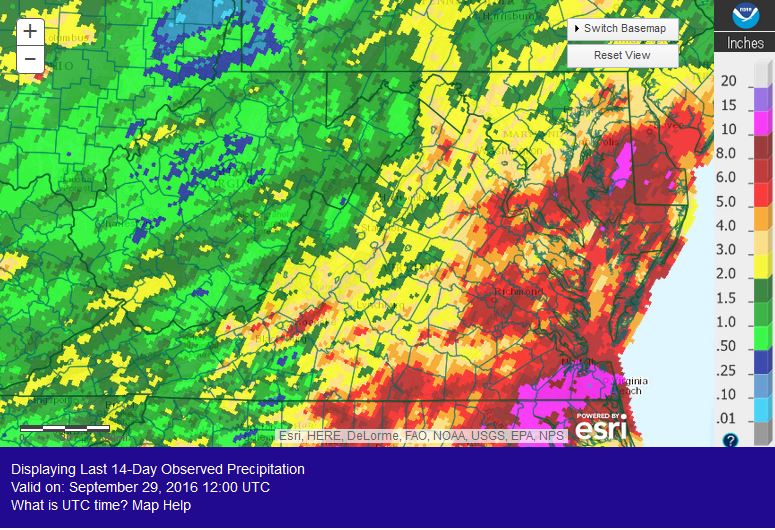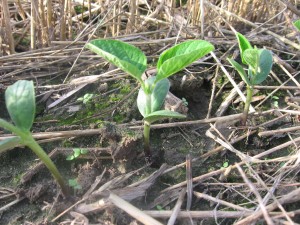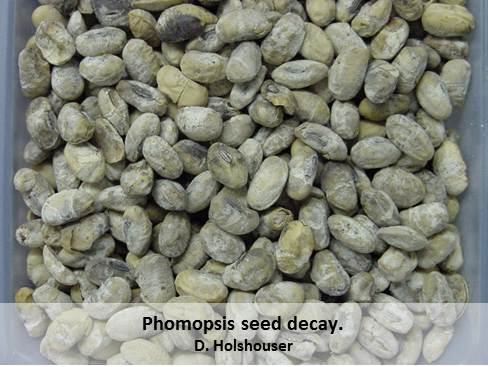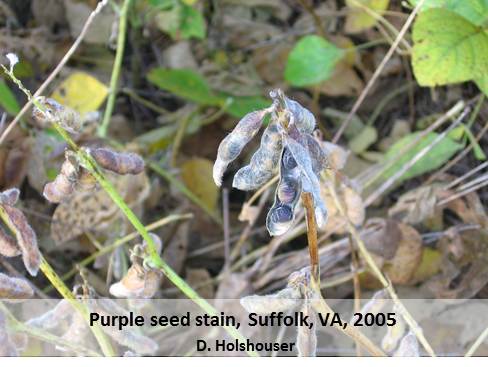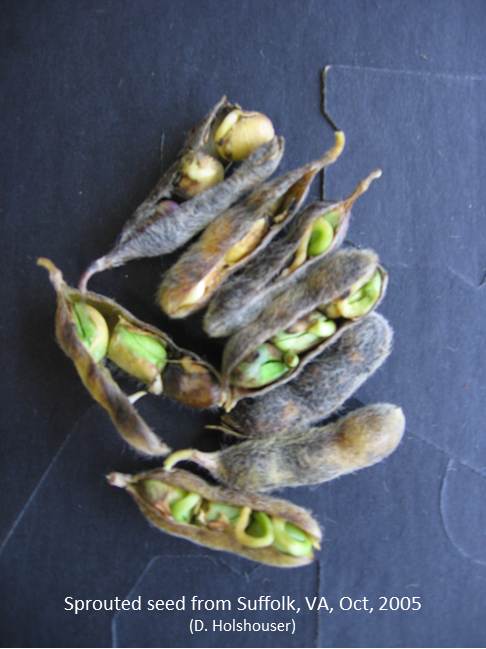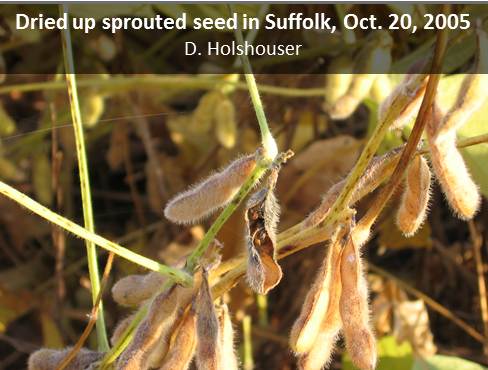I’ve been very hesitant to write this article and I’ve held off for several weeks, hoping to have more yield results in before saying anything. But I’ve seen enough so far in my observations of our variety tests as well as other fields that I think what I’m about to write is fairly accurate. My main concern all along was how much the Aug and September drought hurt us. Below is the rainfall anomalies in the U.S. It’s easy to see that we were way below average with the exception of southeast Virginia and parts of the Eastern Shore.
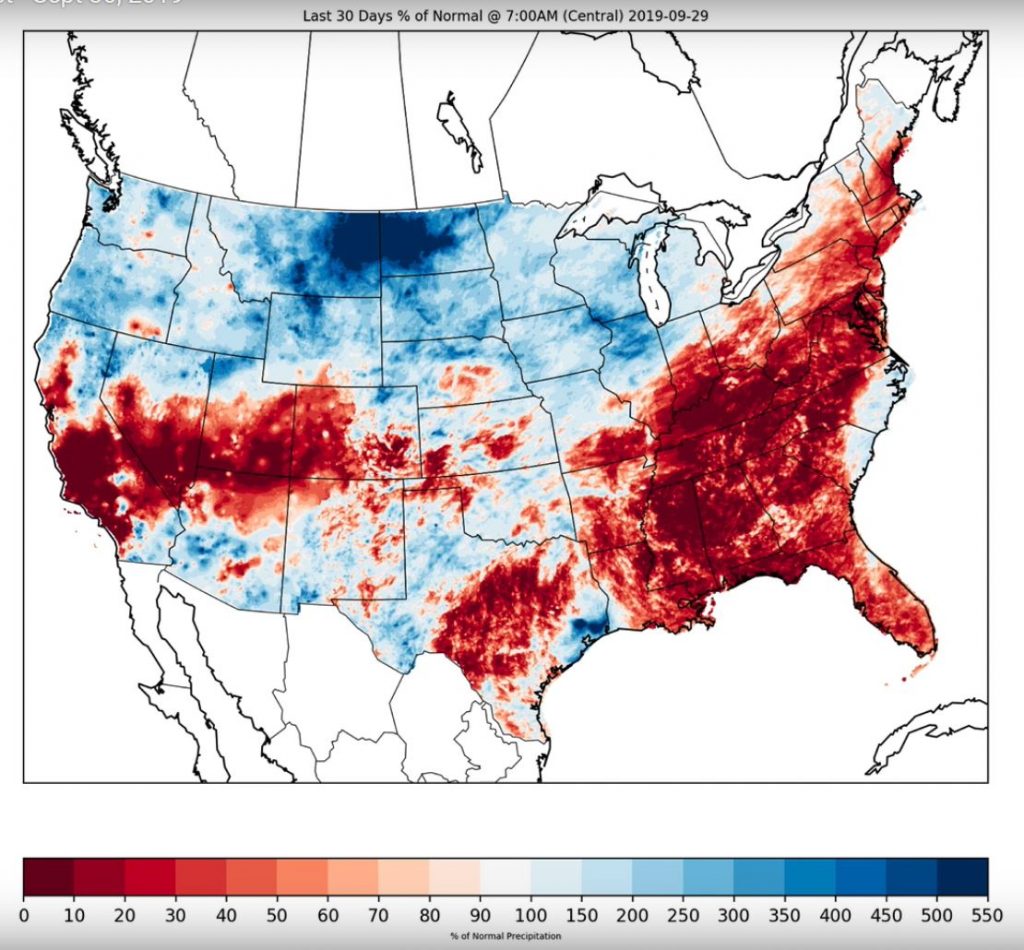
September Rainfall Anomalies
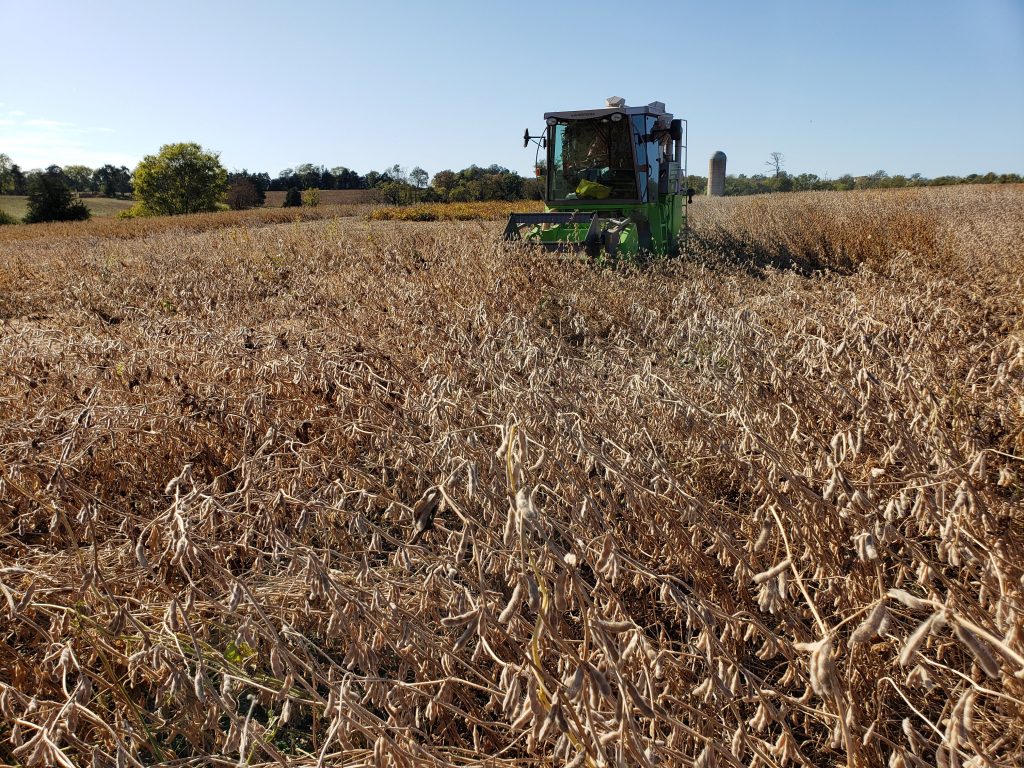
Orange OVT Early-MG 4 Harvest 2019
First, the maturity group 3 and early-4 soybean should be the cream of the crop this year. The yields that we are seeing is impressive and I’m hearing the same from others. These maturities appeared to avoid the drought for the most part. Plus the seed quality is very good (somewhat unusual for early-maturing varieties) due to the lack of September rain although we experienced another warmer-than-average September. This is us harvesting in Orange County last week – yields were in the 60’s and 70’s.
What about the later-maturing varieties that we grow the most of? A casual look at the soybean remaining in the field seem to indicate that we have a pretty good pod load in most cases, with late-planted soybean being the exception. Although the drought did hurt us, it’s somewhat hard to see now. Again, that’s from a casual observation. A closer look at the late-4’s reveal that the yield potential is still pretty good (see photos below; we did not harvest these due to a few varieties not yet being fully mature). Although we had a few aborted and small seed, most were intact. Keep in mind that this is a very good soil (Davidson clay) and the area did pick up a few rains that other parts of Virginia did not.
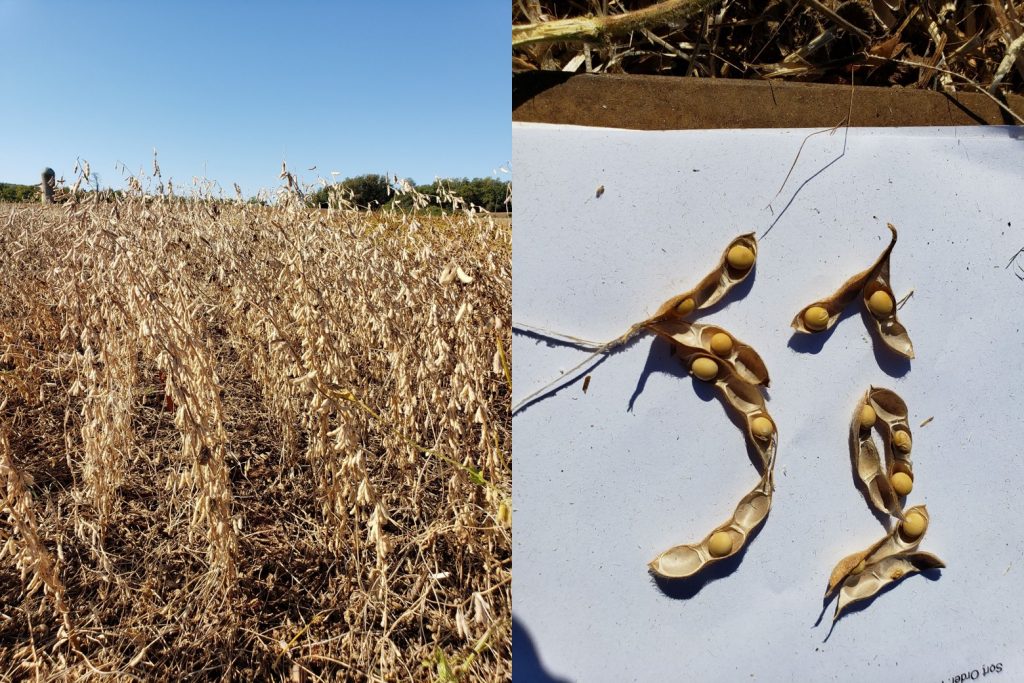
Orange OVT 2019 – Late MG 4
But what about our group 5 soybean? They don’t look nearly as good. Although pod abortion was not too bad, we had a good deal of flat pods and seed abortion within pods that were not completely flat where all seed were aborted. Don’t confuse the flat seed remaining in the pod with stink bug damage. Sting bug damage will usually result in discolored seed (there is one seed below that shows this); the small/flat seed due to drought-stress are usually not discolored. There was a pretty striking difference between the late-4’s and mid- to late-5’s; in general, the later maturity the more seed abortion.

Orange OVT 2019 MG 5
Although I’m not seeing another concern, I think that it’s worth mentioning. A few years ago we observed drought-related green seed. These were not from late-maturing green stems or scattered plants. They were from the plant dying before the crop matured. This is only the case where we have extreme drought conditions and usually on a very low water-holding-capacity soil. But, I am seeing some dead leaves sticking to the stem, an indication of early plant death (see photo below) on some of our later-maturing varieties. While I hope this is not and issue this year, I did want to bring it to your attention. Too much green seed in a load will result in a reduced price for the crop.
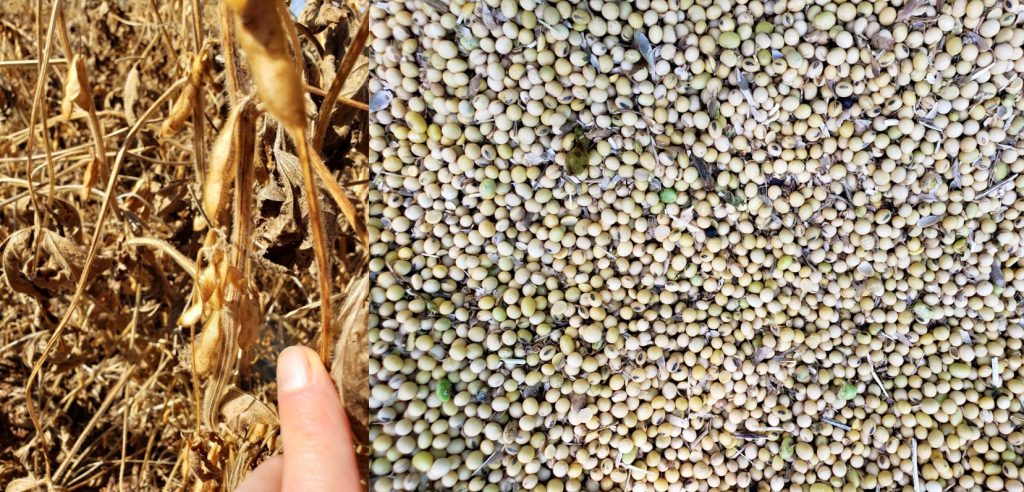
Finally a note about green stems and branches. Anytime that we have a high amount of pod and/or seed abortion we can end up with some green stems. In some cases, we’ll even have green leaves on the plant although the seed are dry. This sometimes occur with high infestations of brown marmorated stink bug along the edge of a field or with certain viruses. But, drought can also cause this.
In addition to green stems, I’m getting reports of dry seed on the main stem (basically a mature plant), but the plant contains many green stems with immature seed. We have seen this in past years in low areas of the field where an overabundance of rainfall occurred early in the vegetative stages followed by a short intense drought (which I think stopped main stem growth) and by low light conditions. Once the drought was over, branch growth then took over. Branches are always behind the rest of the crop in maturity and the branches basically behave indeterminately (lower pods are more mature than upper pods), resulting in many immature seed at harvest. the last two pictures below are from late-May planted soybean in Mecklenburg County this year. At that location, about 10-12 inches of rain fell in the early vegetative stages and the soybean did not grow for the next 3-4 weeks, even with all this moisture. There was also lots of deer feeding. This was of course followed with the drought in Aug and September. While that situation was not exactly the same as the one I described previously, the problem is similar.
Regardless, one has to decide whether to harvest now and get the bulk of the crop before it shatters or wait until the rest of the seed to dry down. You definitely don’t want a lot of “butterbeans” in the load, but neither do you want lots of high-moisture seed that will affect overall moisture and storability. Shattering in today’s varieties are not as bad as in the past, so I’d wait a few days.

